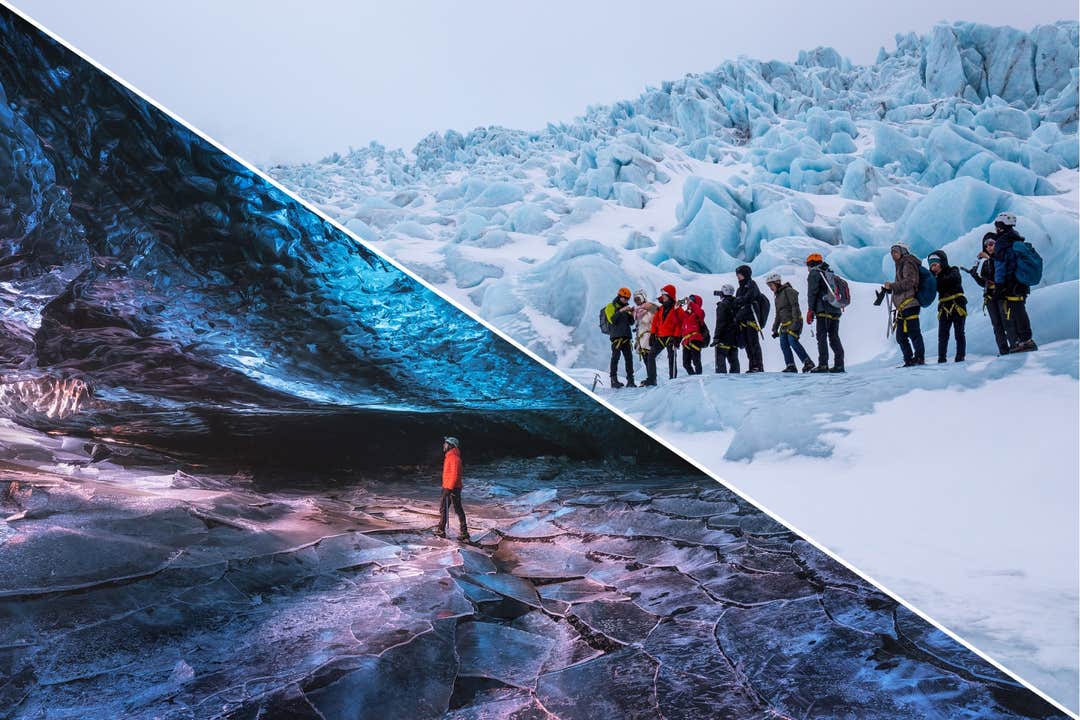Descrizione
Riepilogo
Descrizione
Vivete la magia dell'Islanda in questa indimenticabile avventura di escursioni sul ghiacciaio e speleologia su ghiaccio a Skaftafell. Esplorate il Vatnajokull, il ghiacciaio più grande d'Europa, ed entrate in una straordinaria grotta di ghiaccio blu: una meraviglia naturale che non dimenticherete mai.
Il viaggio inizia nella Riserva Naturale di Skaftafell, dove incontrerete la vostra guida esperta e vi attrezzerete con ramponi, casco e piccozza. L'avventura inizia con una passeggiata di 20 minuti fino al ghiacciaio, passando per luoghi affascinanti come rocce deformate e zone di muschio che mostrano dove un tempo arrivava il ghiaccio e una laguna con gli ultimi resti di ghiaccio sciolto.
Una volta arrivati a Falljokull, uno dei più incantevoli ghiacciai di sbocco del Vatnajokull, la guida vi insegnerà a camminare sul ghiaccio e vi fornirà una rapida sessione informativa sulla sicurezza.
Poi si parte per un'escursione di tre ore sul ghiacciaio attraverso paesaggi mozzafiato. Sebbene l'escursione sia ricca di panorami e caratteristiche incredibili come crepacci, mulini glaciali, topi dei ghiacciai (ghiaccio ricoperto di muschio) e imponenti cascate di ghiaccio, è gestibile e progettata per essere piacevole per la maggior parte dei livelli di preparazione. La guida si assicurerà che il ritmo sia comodo e piacevole, fornendo supporto durante il viaggio.
Il punto culminante del tour è l'abbagliante grotta di ghiaccio blu, dove le vivaci sfumature di ghiaccio blu creano un'atmosfera surreale e magica. Questa incredibile esperienza è perfetta per gli avventurieri di tutti i livelli e offre scenari mozzafiato, scoperte affascinanti e ricordi che dureranno per tutta la vita.
Prenotate ora per assicurarvi il vostro posto ed esplorare i paesaggi più incantevoli di Skaftafell! Verificate la disponibilità scegliendo una data.













